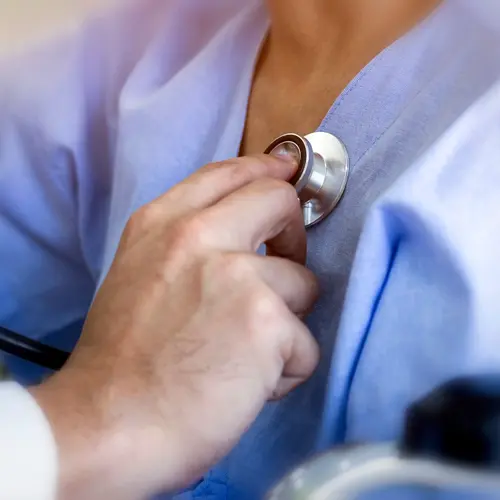Coronary arteries are blood vessels that wrap around the heart and give blood and oxygen to the entire heart muscle. The walls of arteries have muscles themselves, and a coronary artery spasm is a tightening of those muscles. Depending on how long the spasm lasts, the blood flow to your heart can either be limited or completely blocked.
Causes of Coronary Artery Spasms
Usually, a coronary artery spasm will take place in an artery that is not clogged with plaque buildup, but it can also happen with arteries that do have plaque inside them. It also typically only happens in one part of the artery.
These spasms usually happen suddenly and can be brought on by:
- Alcohol withdrawal
- High blood pressure
- High cholesterol
- Stress
- Cold weather
- Medications that impact the blood vessels
- Use of stimulant drugs like cocaine or amphetamines
- Smoking cigarettes
- Magnesium deficiency
- Migraines
- Heart procedures
Among the strongest triggers of coronary artery spasms are cigarette smoking and stimulants. In particular, cigarette smoking significantly increases your chances of getting arterial spasms and quitting smoking decreases your chances.
But sometimes when a spasm occurs, there is no cause to point to.
Symptoms
Coronary arterial spasms usually have no symptoms unless they're strong enough to cause chest pains. You may feel such pain during physical activities or stress. But it should be noted that only 2% of people who have chest pain are experiencing a coronary artery spasm or variant angina.
Variant Angina. When you have chest pain that is due to not enough blood flow to the heart, you are said to have angina. A coronary artery spasm that involves pain can bring on a rare condition called variant angina. It's also called Prinzmetal's or Prinzmetal angina, or angina inversa.
Variant angina usually happens in younger people who do not have any other type of heart condition, and it can affect them during rest. And because chest pain is usually a sign that you have heart disease, it is important that you seek medical treatment if you think you are experiencing variant or any other type of angina.
Usually, if you feel chest pain from a coronary artery spasm, you will feel it under the sternum (breast bone), on the left. This pain is very intense, and it can feel like your chest is being squeezed. Occasionally, these sensations can spread to other parts of the body like the neck, arm, shoulder, or jaw.
Coronary artery spasms usually happen during sleep at the same time each day. They can last for up to 30 minutes and sometimes result in a loss of consciousness.
Diagnosis
After you go to the doctor and describe your symptoms, your doctor will give you some tests.
An electrocardiogram. This tests the electrical signals of your heart. It requires no preparation and does not take very long to conduct. Electrocardiograms can detect abnormal heart patterns both during a spasm and after one.
Echocardiogram. An echocardiogram is essentially an ultrasound for the heart. Your doctor will be able to map out your heartbeat through a sonic test. They will place a wand on the top of your chest that can pick up high-frequency sound waves. These sounds allow them to paint a picture of the different parts of your heart.
Coronary angiography. This may be the best way to detect if you have a coronary artery spasm. This test involves a procedure in which your doctor will inject contrast dye into a blood vessel.
The doctor will then take an X-ray of your heart. The X-ray will show whether you have any blockages.
Ambulatory monitor. You may need to spend 24 hours or more on an ambulatory monitor, a device that records your heart rhythms as you go about your business. The monitor will show your doctor your heart’s patterns and possible spasms at all times of the day.
Treatment
The risks of coronary artery spasms are quite significant. Depending on how bad the blockage is, you are at risk for several different conditions, including cardiac arrest, organ failure, heart failure, or even sudden death. While having spasms is a chronic condition, there are many treatment plans out there that can keep you safe.
You must consult your doctor to find out what would be right for you. Still, some of the most common medications prescribed are:
- Nitroglycerin
- Calcium channel blockers
- Long-acting nitrates
- Beta-blockers
In addition to medication, you should also make these lifestyle changes (if you haven't already):
- Quit or don’t start smoking
- Limit your time in the cold
- Don’t do cocaine or take any amphetamines
- Avoid stress as much as you can
- Eat a healthy diet
- Ask your doctor how much and what type of exercise is right for you

